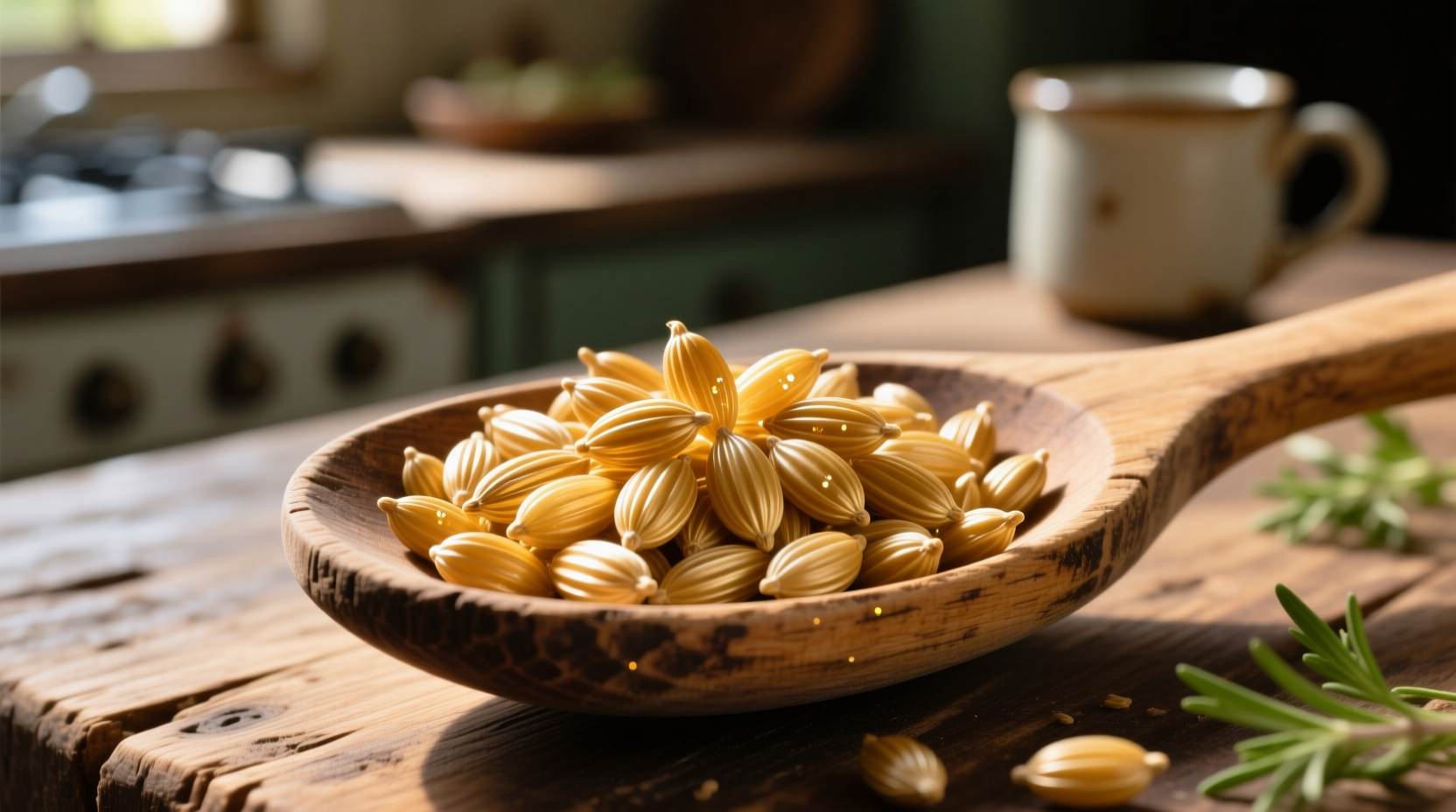When you reach for celery seeds in your spice cabinet, you're accessing one of cooking's most versatile flavor enhancers. These tiny powerhouses deliver the essence of celery in concentrated form, making them indispensable for chefs and home cooks seeking depth without bulk. Let's explore how to maximize this often-overlooked spice.
What Exactly Are Celery Seeds?
Celery seeds come from the same plant that produces the familiar celery stalks, but represent the mature fruit harvested after flowering. Measuring just 1-2mm in length, these brownish-tan seeds contain essential oils that provide significantly more intense flavor than their stalk counterparts. Unlike celery salt (which combines ground seeds with sodium), pure celery seeds offer unadulterated flavor complexity.
| Characteristic | Celery Seeds | Celery Stalks | Celery Salt |
|---|---|---|---|
| Flavor Intensity | Concentrated (10x stronger) | Mild | Moderate (diluted by salt) |
| Moisture Content | Dry (0% moisture) | 95% water | Dry |
| Primary Use | Flavor base, spice blends | Crudités, stocks | Seasoning, finishing |
| Shelf Life | 2-3 years (properly stored) | 1-2 weeks | 1-2 years |
Flavor Profile and Culinary Applications
Celery seeds deliver a complex flavor profile: earthy base notes with subtle bitterness, warm herbal undertones reminiscent of parsley, and a faint citrus finish. This unique combination makes them particularly valuable in recipes where fresh celery would introduce unwanted moisture.
Professional chefs utilize celery seeds in three primary ways:
- As a flavor foundation - Added early in cooking to infuse dishes with deep celery essence (particularly effective in stocks and braises)
- In spice blends - Essential component of Old Bay seasoning, celery salt, and many pickling spice mixes
- As a finishing touch - Lightly toasted and sprinkled over roasted vegetables or salads for aromatic complexity
For home cooks wondering how to use celery seeds in cooking, consider these practical applications:
- Add 1/4 teaspoon to potato salad for authentic flavor without watery texture
- Include in homemade ranch dressing for professional-level depth
- Blend with mustard seeds and coriander for elevated pickling spice
- Stir into tuna or chicken salad instead of chopped celery

Historical Context and Modern Usage
Celery seeds have been used since ancient times, with archaeological evidence showing their presence in 9th century BCE Mediterranean trade routes. Historical records indicate Egyptian physicians prescribed them for medicinal purposes, while medieval European cooks valued them as a precious spice before celery cultivation became widespread.
Today's culinary applications reflect this rich history. The seeds' concentrated flavor makes them particularly valuable in:
- Pickling recipes - Where their antimicrobial properties complement vinegar preservation
- Dry rubs - Providing moisture-free celery flavor to meats
- Vegan cooking - Creating "celery" flavor in dishes where fresh stalks would wilt
Health Considerations and Nutritional Profile
According to USDA FoodData Central, one teaspoon (2.4g) of celery seeds contains:
- 11 calories
- 0.5g dietary fiber (2% daily value)
- Significant potassium and calcium
- Phytochemicals including apigenin and luteolin
Research published in the Journal of Agricultural and Food Chemistry indicates these compounds may offer antioxidant benefits, though culinary quantities provide minimal therapeutic effect. As with all spices, celery seeds should be considered a flavoring agent rather than a health supplement.
Practical Usage Guidelines
Understanding what do celery seeds taste like helps prevent common mistakes. Their concentrated flavor means:
- Start with 1/4 teaspoon per recipe and adjust gradually
- Always toast lightly in dry pan before use to enhance flavor
- Avoid adding directly to cold dishes without blooming in oil first
- Never substitute equal parts for fresh celery (use 1 tsp seeds = 1 cup chopped stalks)
Substitution Options When Celery Seeds Are Unavailable
If you're searching for celery seeds substitute options, consider these alternatives based on your recipe's requirements:
- For moisture-free applications: Celery salt (reduce additional salt by 1/4 tsp per 1/2 tsp used)
- For fresh flavor: Finely minced celery leaves (use 2x volume)
- For pickling: Lovage seeds (similar flavor profile)
- Emergency substitute: Dill seed + pinch of parsley flakes (not ideal but functional)
Proper Storage for Maximum Freshness
To maintain potency of the best way to store celery seeds, follow these professional guidelines:
- Keep in airtight container away from light and heat
- Store below 70°F (21°C) for optimal shelf life
- Check freshness by rubbing between fingers - should release aromatic oils
- Replace when aroma diminishes (typically after 18-24 months)











 浙公网安备
33010002000092号
浙公网安备
33010002000092号 浙B2-20120091-4
浙B2-20120091-4